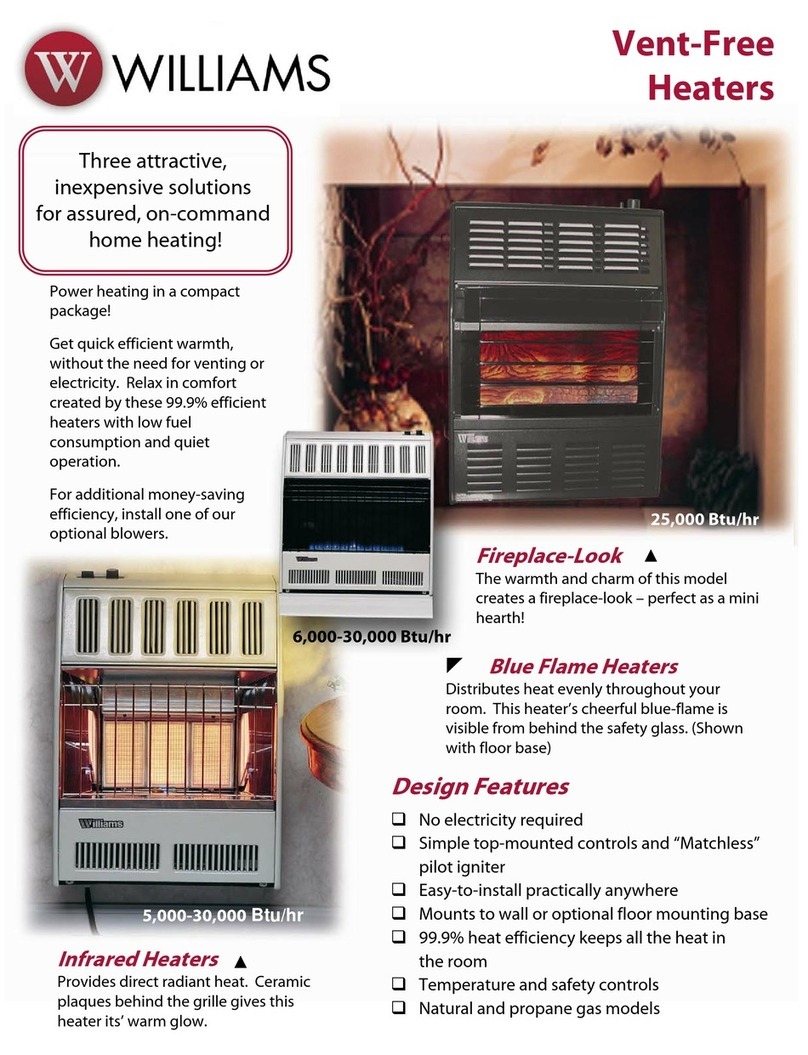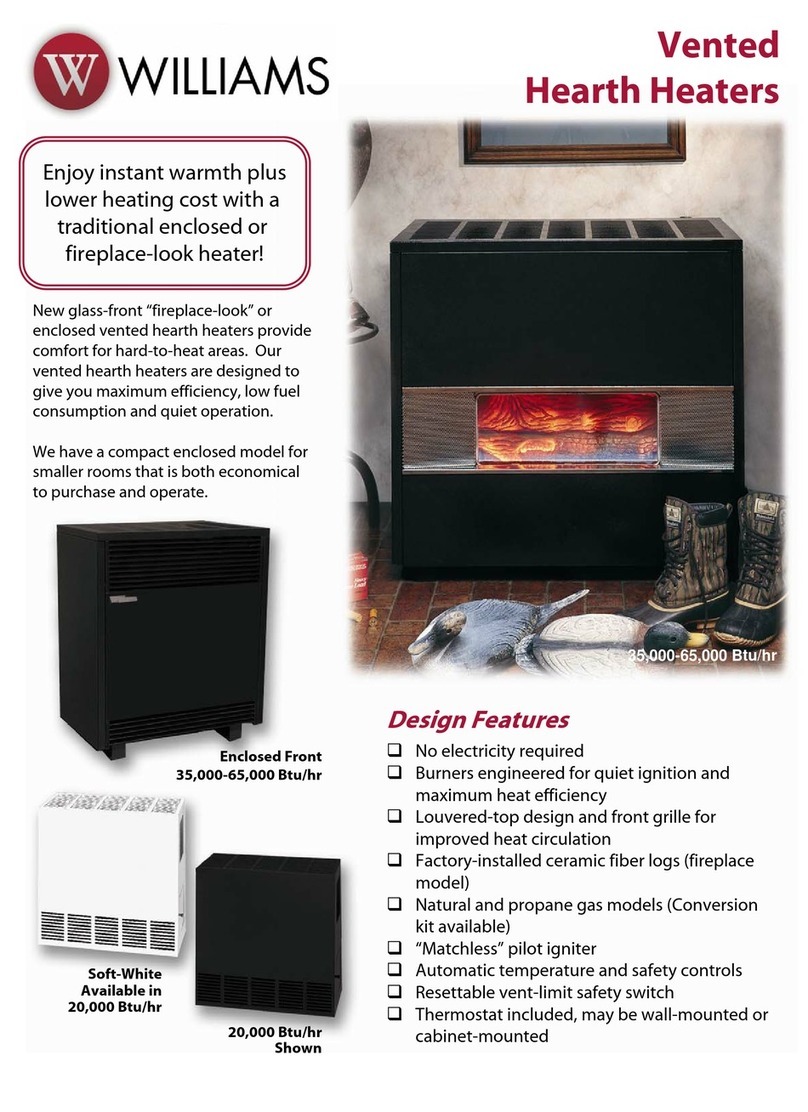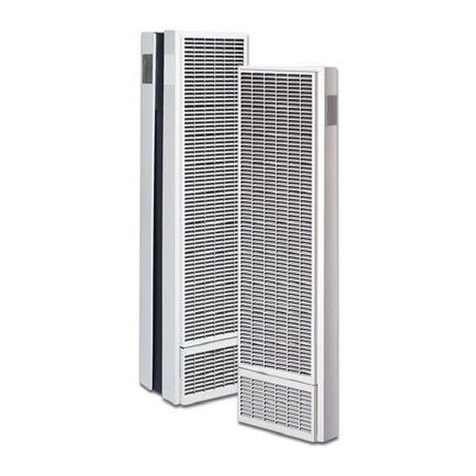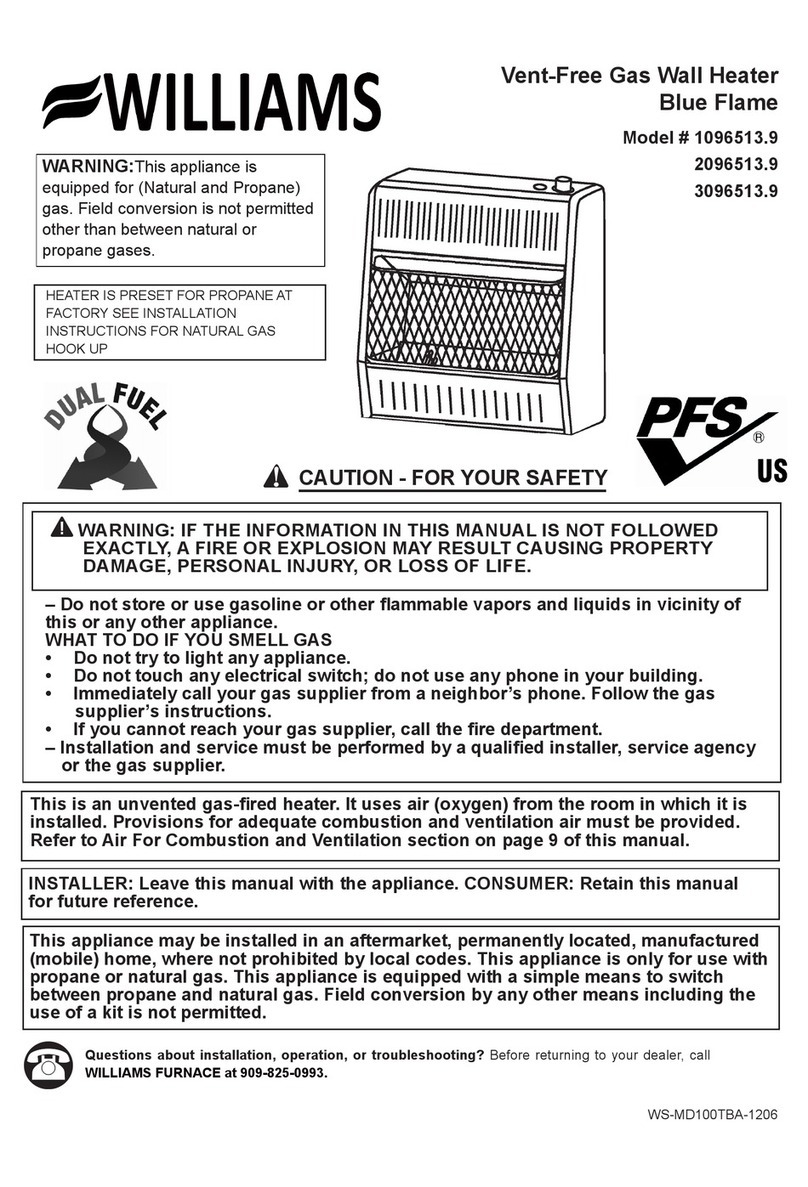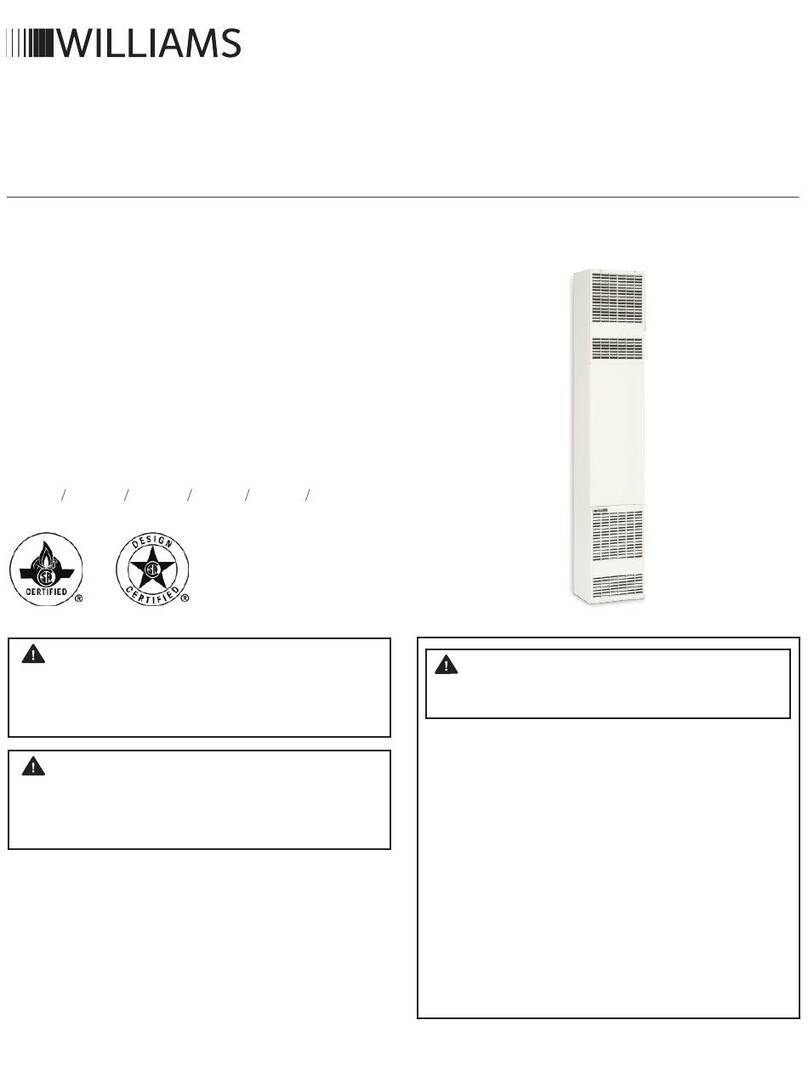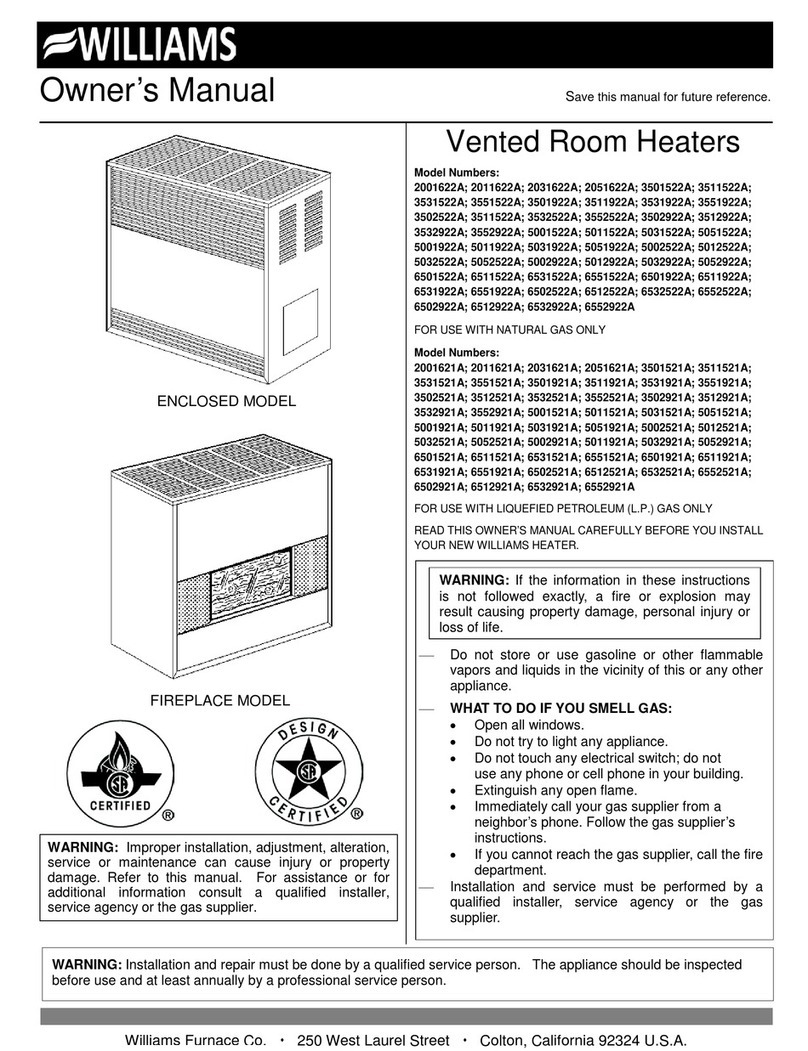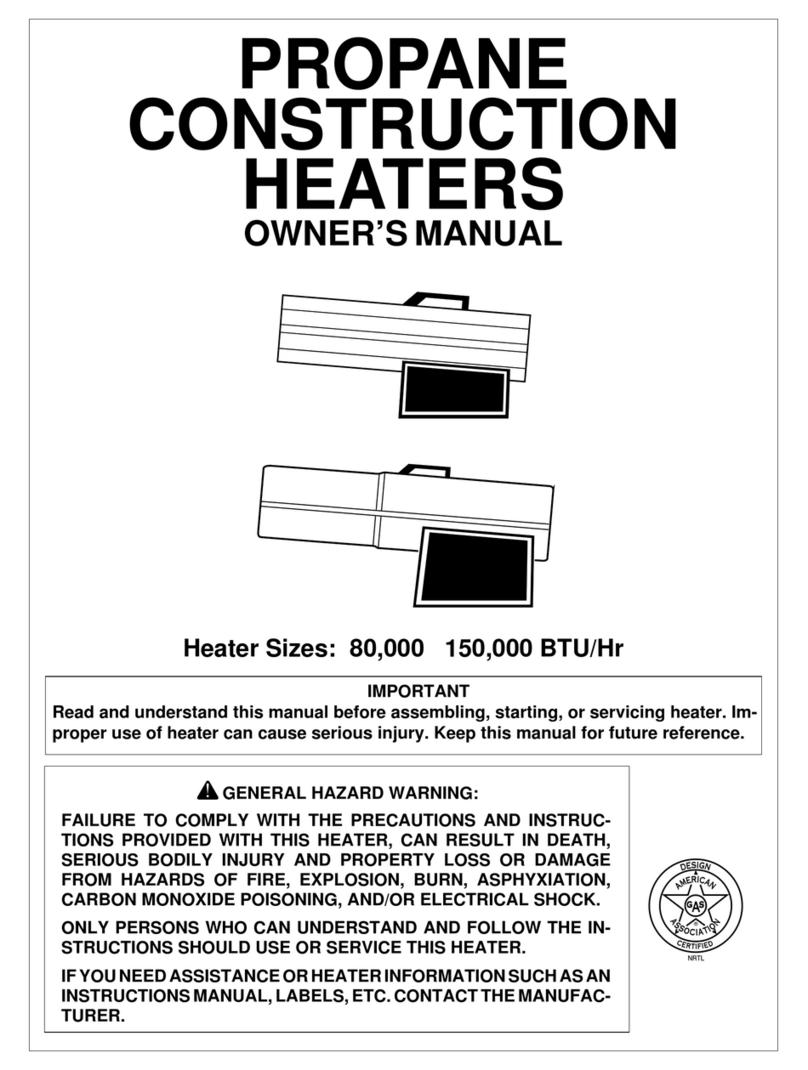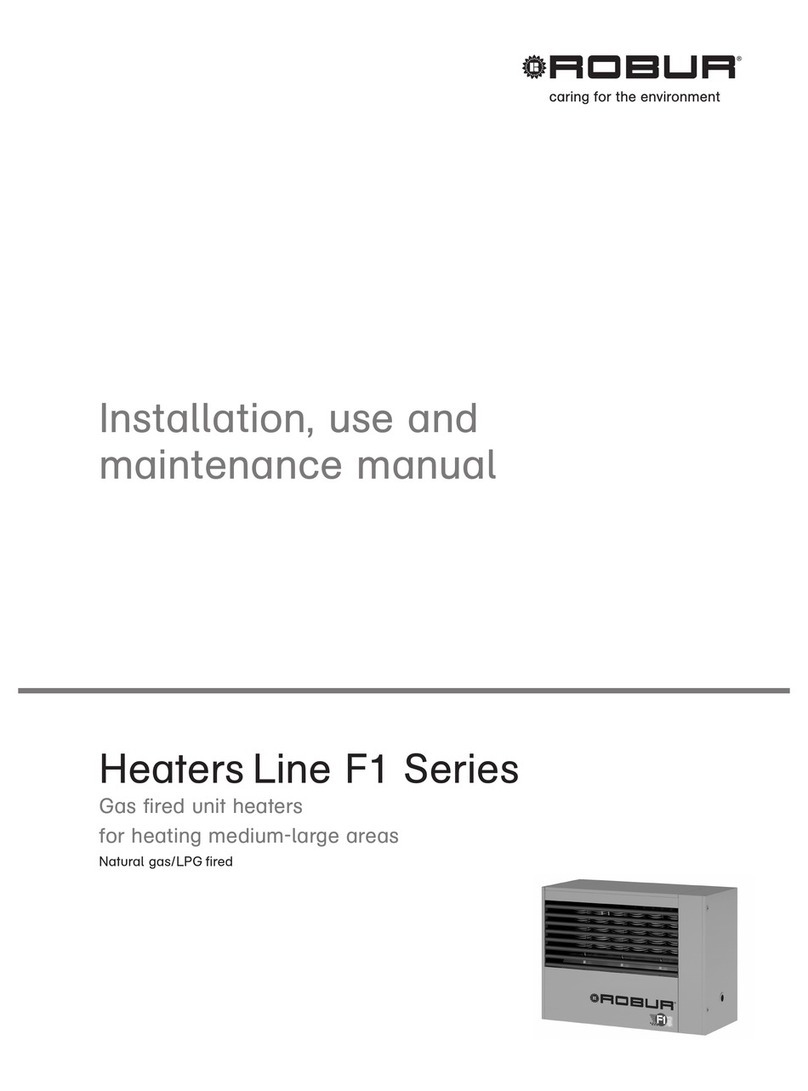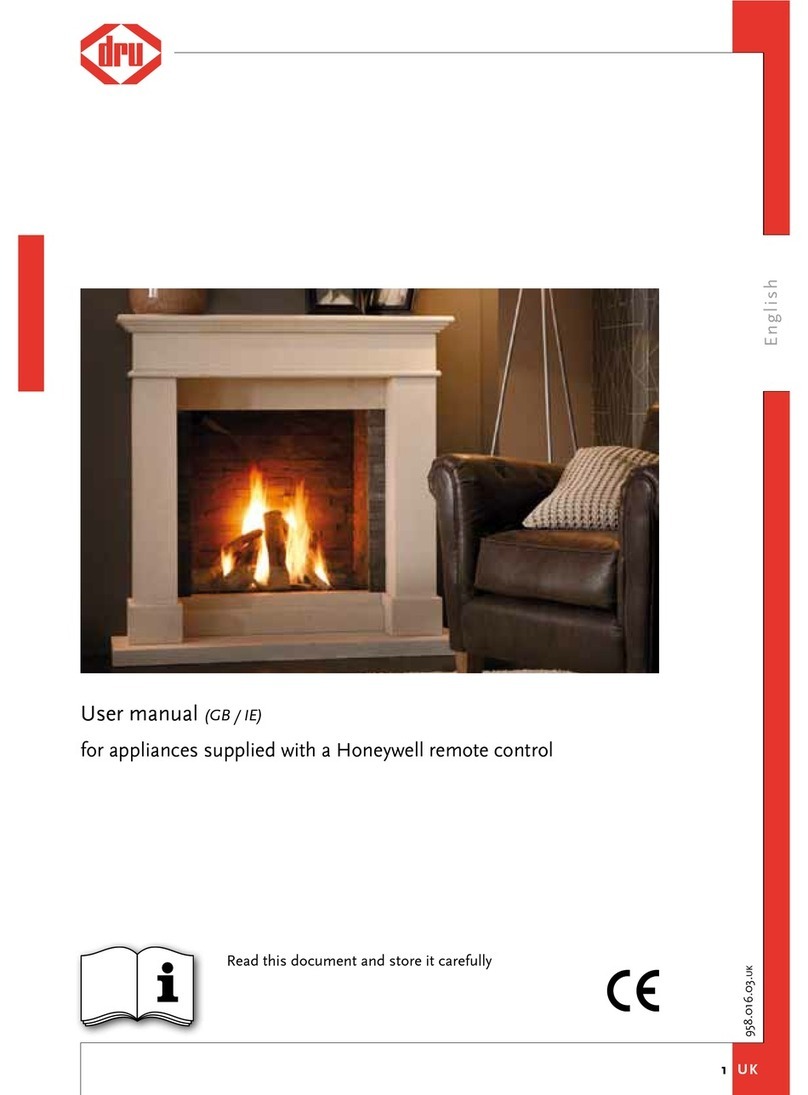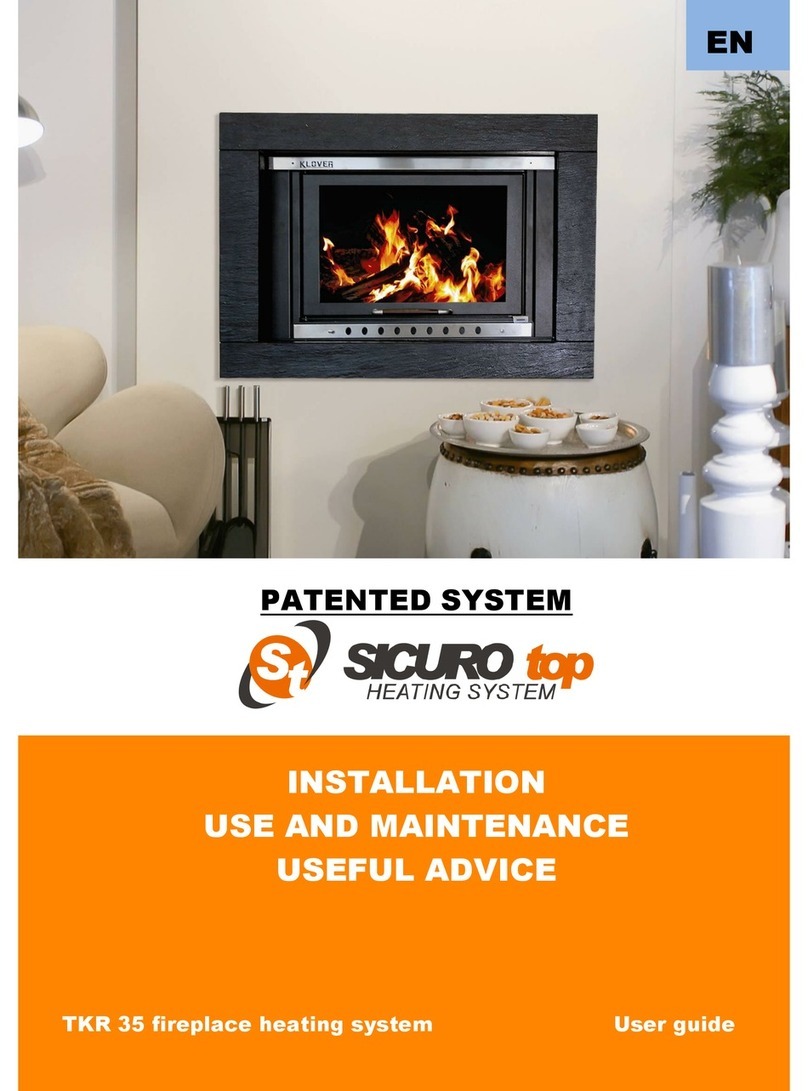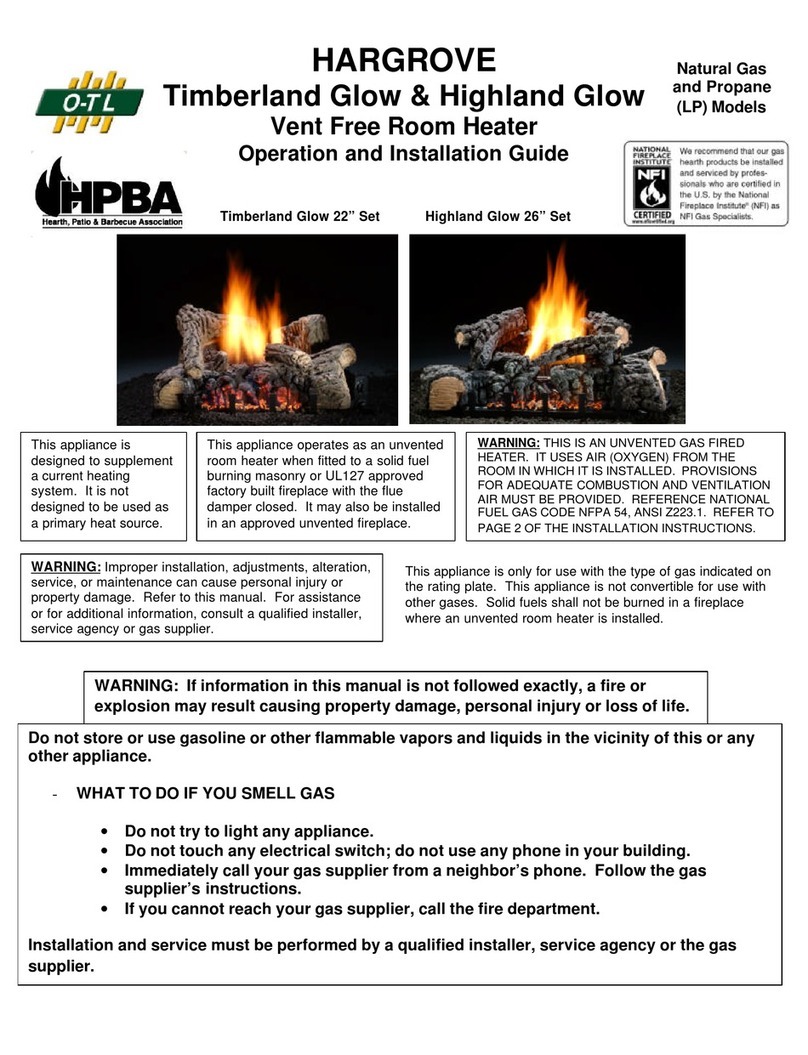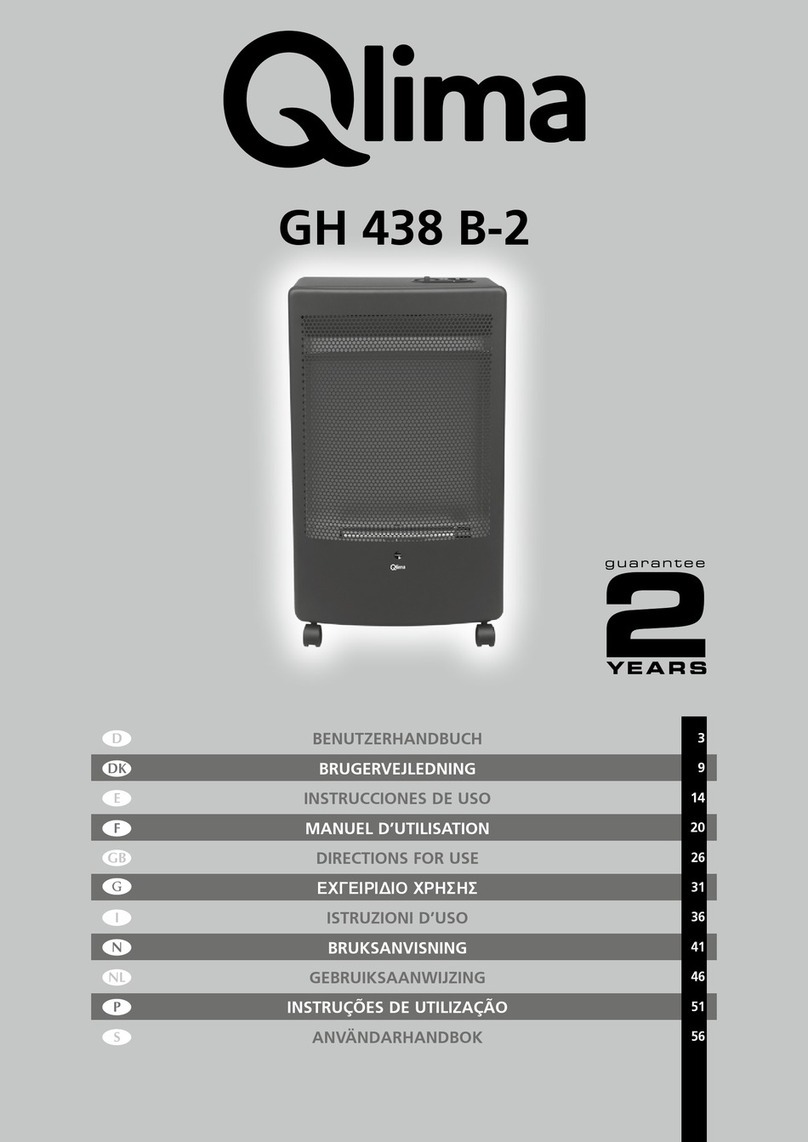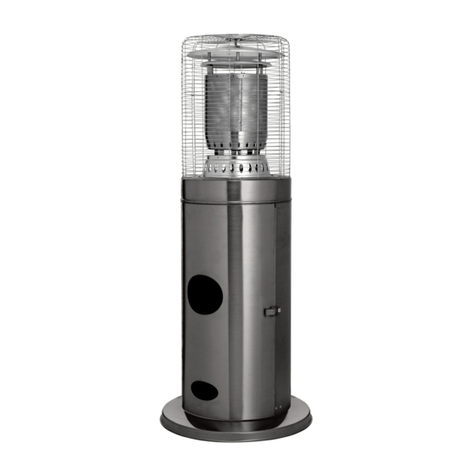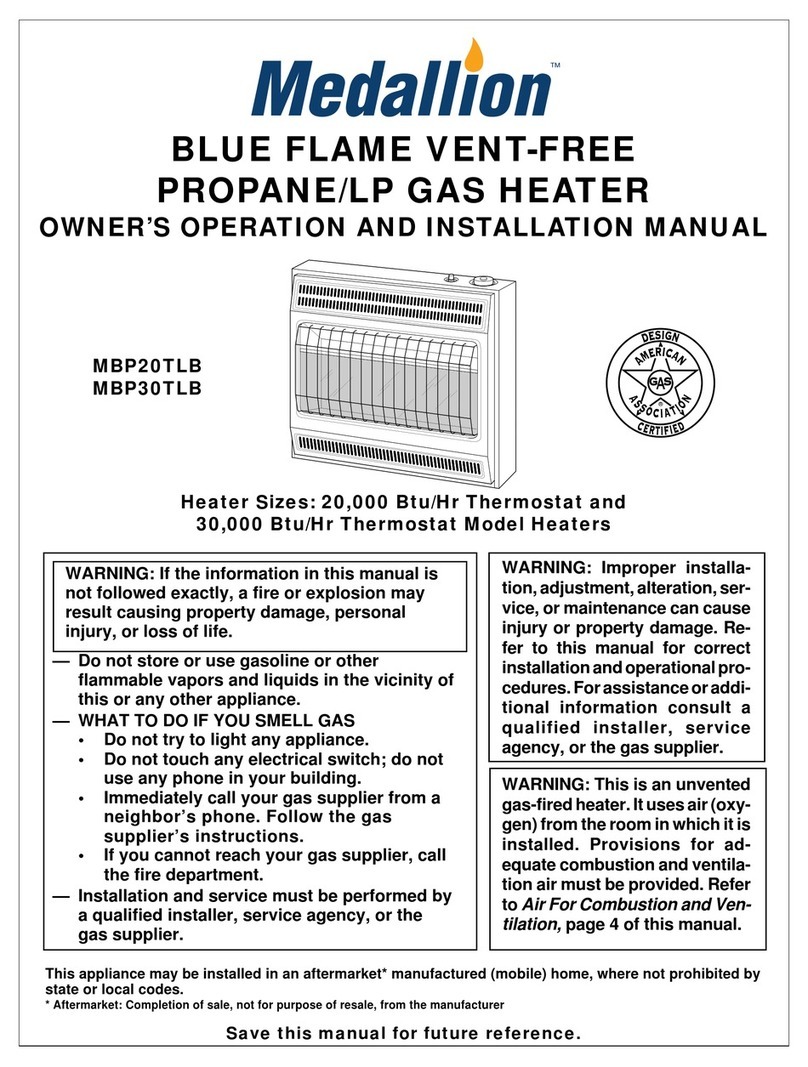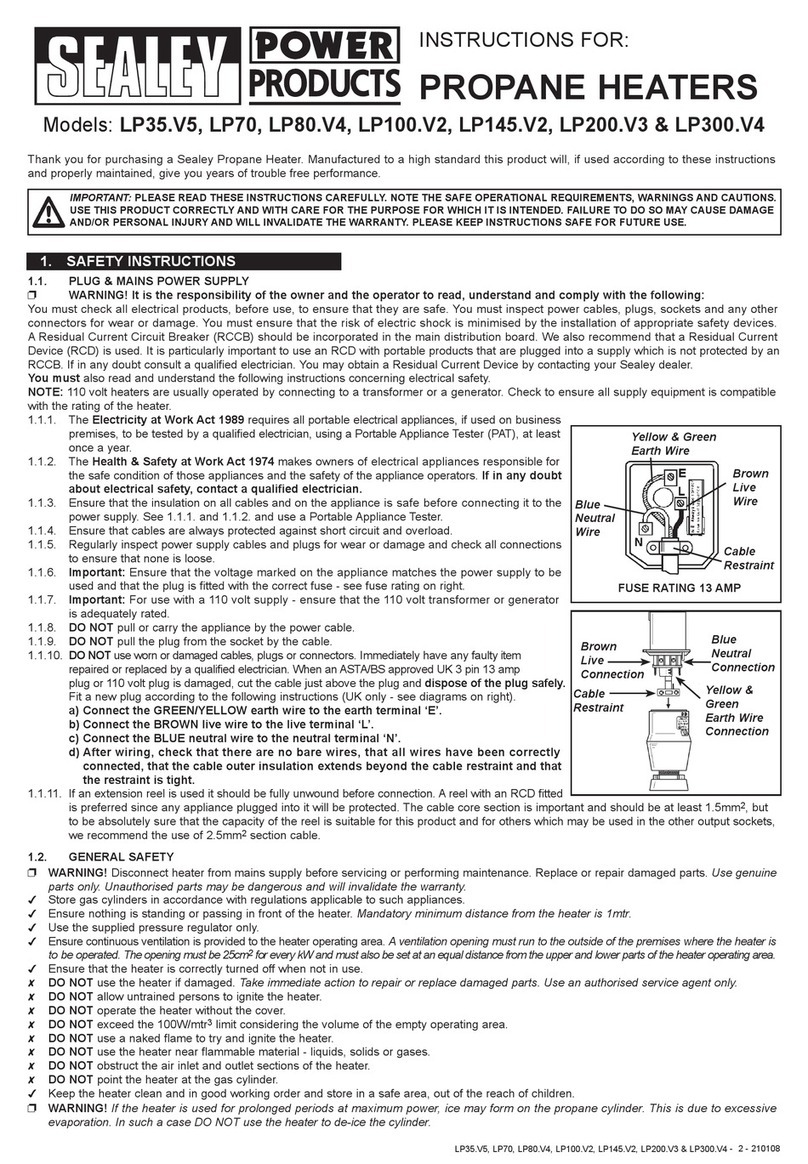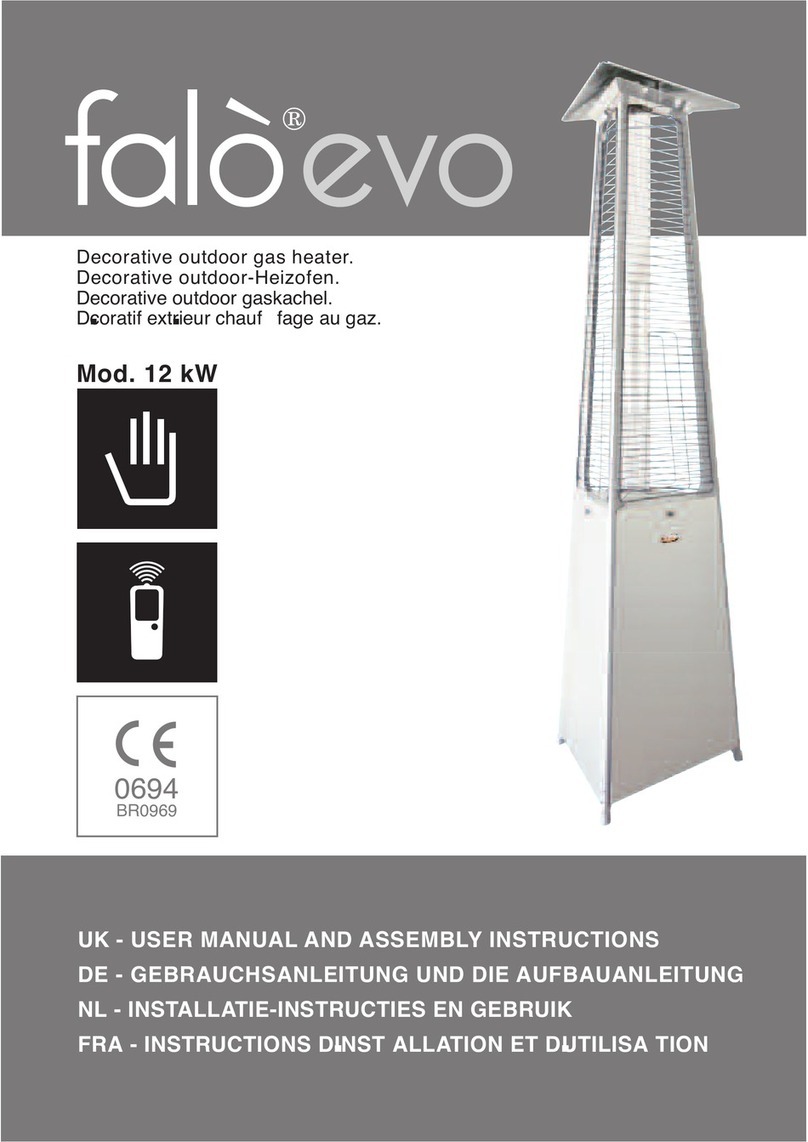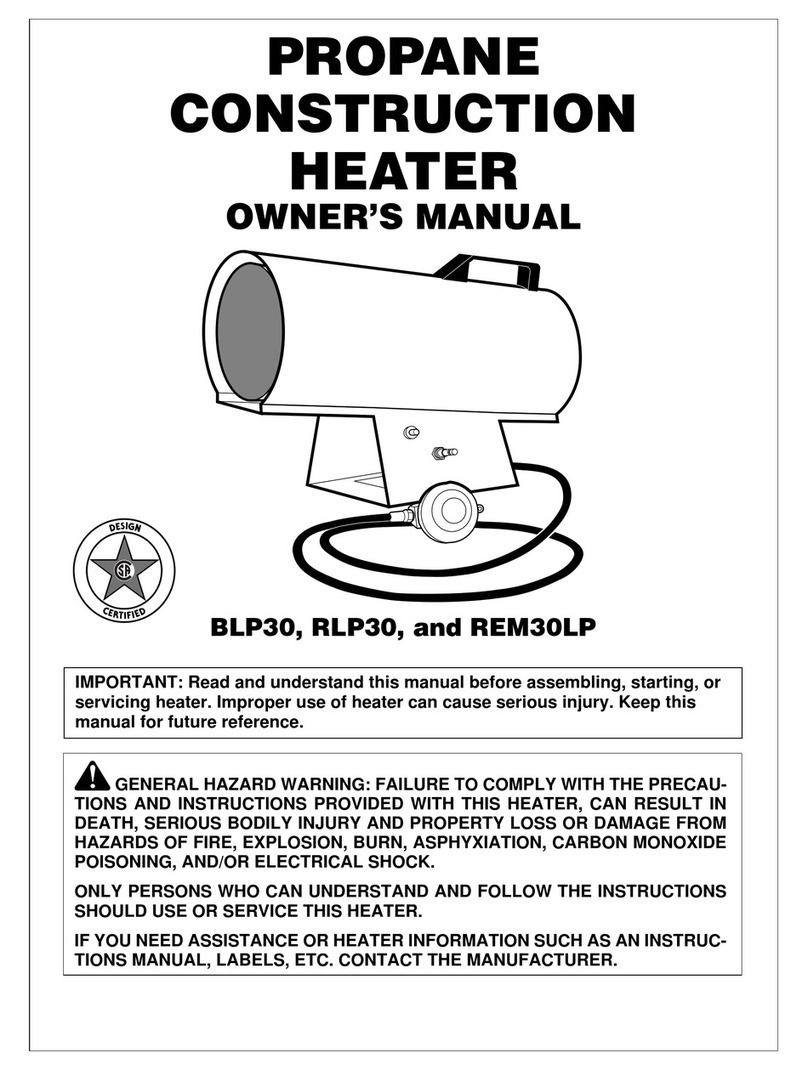
7
After picking a location that meets the requirements, check
the walls, attic and roof to make sure there are no obstructions
such as pipes, electrical wiring, etc., which could interfere with
the installation of the furnace or vent pipe. If required, move
them or pick a new location.
WARNING: Danger of property damage, bodily injury or
loss of life. Do not install the furnace in any area where
oxygen is in use.
Combustion & Ventilation Air
When an existing category I heater is removed or replaced,
the original venting system may no longer be sized to
properly vent the attached appliances.
WARNING:
CARBON MONOXIDE POISONING HAZARD
Failure to follow the steps outlined below for each appliance
connected to the venting system being placed into operation
could result in carbon monoxide poisoning or death.
The following steps shall be followed for each appliance
connected to the venting system being placed into operation,
while all other appliances connected to the venting system
are not in operation:
1. Seal any unused openings in the venting system.
2. Inspect the venting system for proper size and horizontal
pitch, as required in the National Fuel Gas Code, ANSI
Z223.1/NFPA 54 or the Natural Gas and Propane
Installation Code, CSA 8149.1 and these instructions.
Determine that there is no blockage or restriction,
leakage, corrosion and other deficiencies which could
cause an unsafe condition.
3. As far as practical, close all building doors and windows
and all doors between the space in which the
appliance(s) connected to the venting system are located
and other spaces of the building.
4. Close fireplace dampers.
5. Turn on clothes dryers and any appliance not connected
to the venting system. Turn on any exhaust fans, such as
range hoods and bathroom exhausts, so they are
operating at maximum speed. Do not operate a summer
exhaust fan.
6. Follow the lighting instructions. Place the appliance
being inspected into operation. Adjust the thermostat
so appliance is operating continuously.
7. Test for spillage from draft hood equipped appliances
at the draft hood relief opening after 5 minutes of main
burner operation. Use the flame of a match or candle.
8. If improper venting is observed during any of the above
tests, the venting system must be corrected in
accordance with the National Fuel Gas Code, ANSI Z223.1/
NFPA 54 and/or Natural Gas and Propane Installation
Code, CSA 8149.1
9. After it has been determined that each appliance
connected to the venting system properly vents when
tested as outlined above, return doors, windows, exhaust
fans, fireplace dampers and any other gashed burning
appliance to their previous conditions of use.
WARNING: Danger of property damage, bodily injury
or loss of life. The furnace and any other fuel-burning
appliances must be provided with enough fresh air for
proper combustion and ventilation of flue gases. Most
homes will require that outside air be supplied into the
heated area.
The high cost of energy for home heating has brought about
new materials and methods used to construct or remodel most
current homes. The improved construction and additional
insulation has reduced the heat loss and made these homes
much tighter around windows and doors so that infiltrated air
is minimal. This creates a problem to supply combustion and
ventilation air for gas-fired or other fuel burning appliances.
Any use of appliances that pull air out of the house (clothes
dryers, exhaust fans, fireplaces, etc.) increases this problem and
appliances could be starving for air.
The combination of a tight energy efficient home with the use
of exhaust fans, fireplaces, clothes dryers, and gas appliances
result in more and more air being drawn from the house until
fresh air may be sucked back into the house down a furnace
flue or fireplace chimney. Carbon monoxide can be the result.
Carbon monoxide (CO) is a colorless, odorless gas produced
when fuel is not burned completely or when the flame does
not receive sufficient oxygen. Automobiles, charcoal, wood fires
and improperly vented or air-starved coal, oil and gas furnaces
or other appliances can produce carbon monoxide.
Do not install furnace in the same room or near a wood solid
fuel burning fireplace.
Be aware of these air-starvation signals:
1. Headaches, nausea, dizziness.
2. Excessive humidity shown by heavily frosted windows or
a moist “clammy” sensation.
3. Fireplace smoke fills the room or will not draw.
4. Furnace flue backs up.
Air requirements
The requirements for providing air for combustion and
ventilation are listed in the National Fuel Gas Code NFPA
54/ANSI Z223.1 (in Canada: CAN/CGA B149). Most homes
will require that outside air be supplied to the heated area
by means of ventilation grilles or ducts connecting directly
to the outside or spaces open to the outdoors such as attic
or crawl space. The only exception is when the heated area
meets the requirements and definitions for an unconfined
space with adequate air infiltration.
All air openings and connecting ducts must comply with
the following:
If the furnace is installed in an area with another gas
appliance(s), the total input rating of all appliances must be
considered when determining the free area requirements
for combustion and ventilation air openings.


